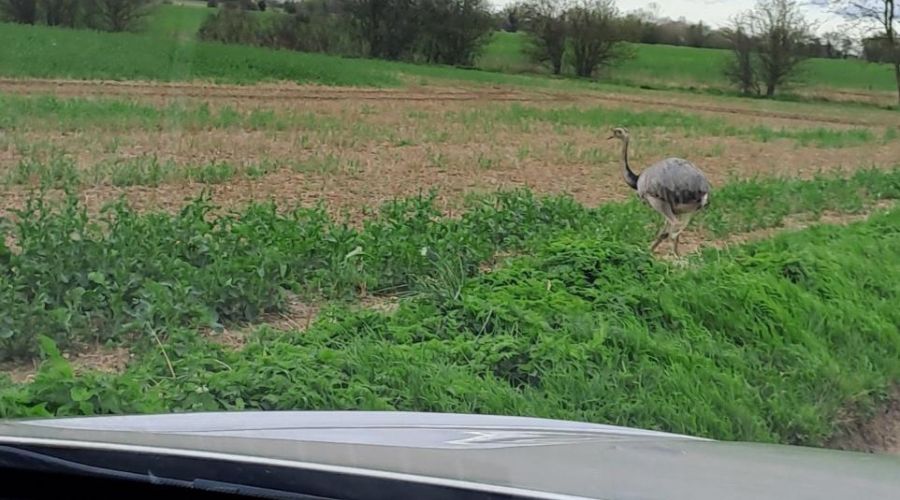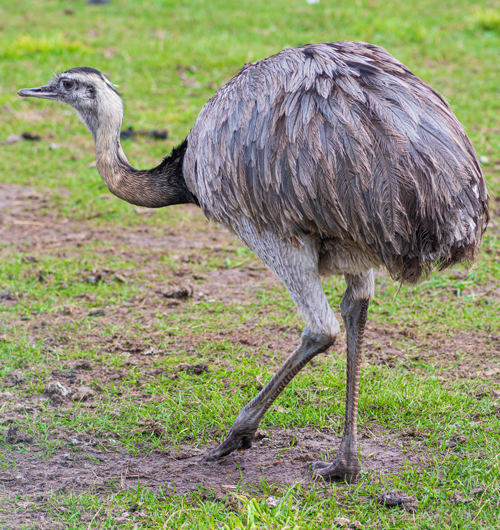Missing Rhea sighted in Suffolk after escaping from farm before Christmas
20th March 2024
A large South American rhea bird has been spotted roaming the Suffolk countryside since its escape from a nearby farm last year.

The loose rhea was spotted by drivers in Wetheringsett, off the A140, on Monday 18th March and continues to evade capture since its escape in December 2023.
As the largest species of South American bird, rheas are native to the continent’s eastern grasslands, growing to 5ft tall, weighing up to 66 pounds and reaching speeds of up to 50mph. Unsurprisingly, they are in the ratite family of flightless birds, which includes the well-known ostrich and emu. On farms, rheas are bred for exotic animal lovers or for their meat, which is known to be similar to beef, but sweeter.

In addition to eating insects, rheas mostly graze by eating broad-leaf weeds, clover, and some grasses, but have also been known to snack on eggs, earthworms and even snakes.
Experts suggested that although a 5ft sturdy fence will adequately contain the majority of rheas, a 6-8ft fence is recommended to eliminate the possibility of a rogue bird clearing the jump.
If you spot the rhea at large, or have any information that could help its owner, please get in touch.
Not an isolated incident
Residents from neighbouring county Norfolk, have seen not one, but 12 rheas on the run.
Last summer, the leet-footed mob escaped from a farm on Common Road, near Stalham. They forced their way out of their enclosure and had been wandering the area for three weeks before returning to the farm.
Drones and a rescue team were engaged in the rhea search.
Rodney on the loose
2023 also marked the year for an emu named Rodney to stretch his legs around Suffolk, after he escaped from a farm in Bury St Edmunds.
He jumped the fence at his home in Chedburgh in the middle of the night on Thursday 13th April. The 11-month-old bird was found by Suffolk police after a five-hour rescue mission.
Read more livestock news.
